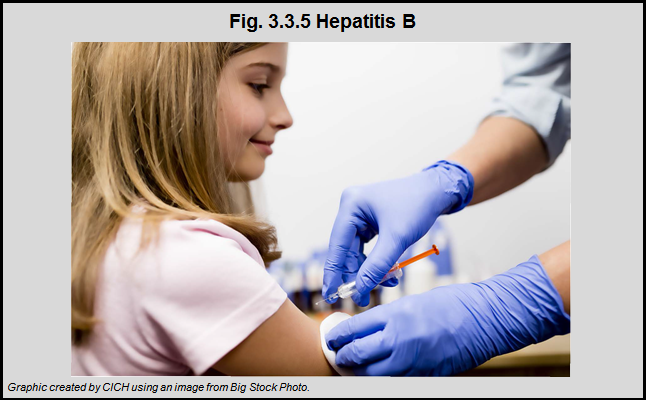Hepatitis B

In Canada, the rates of hepatitis B infection are low (less than 0.5%). During the past four decades most Canadian immigrants have come from countries with relatively high rates of hepatitis, including hepatitis B, and their rate of chronic infection is about 4%. Most of these people do not have symptoms for a long time. The mortality rate from chronic viral hepatitis is higher among immigrants than among those who are Canadian born – most likely because they have a higher rate of untreated, undiagnosed illness. Young children who live with someone with chronic hepatitis B virus are at increased risk of acquiring the infection. This puts immigrant children at higher risk as they are more likely to be living with someone with infection and no symptoms. Many immigrant children have not been immunized against hepatitis B.1 Evidence indicates that immigrant children, youth and families do not have knowledge regarding the seriousness of hepatitis B infection and less than 50% have been screened.2
1Pottie K, Greenaway C, Feightner J, et al. Evidence-based clinical guidelines for immigrants and refugees. CMAJ 2011;183:E824-925.
2Hislop TG, Teh C, Low A, et al. Hepatitis B knowledge, testing and vaccination levels in Chinese immigrants to British Columbia, Canada. Can J Public Health 2007;98:125-9. cited in Pottie K, Greenaway C, Feightner J, et al. Evidence-based clinical guidelines for immigrants and refugees. CMAJ 2011;183:E824-925
Implications
Hepatitis B vaccine is an effective vaccine that significantly reduces the risk of getting the infection. Canadian Immigrant Health Guidelines recommend that susceptible children and youth from countries where Hepatitis B seroprevalence is moderate to high (i.e.,> 2% HBsAg positive) be screened and vaccinated if susceptible.3
For the Canadian Immigrant Health Guidelines click here.
3Pottie K, Greenaway C, Feightner J, et al. Evidence-based clinical guidelines for immigrants and refugees. CMAJ 2011;183:E824-925
